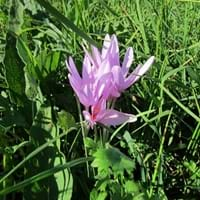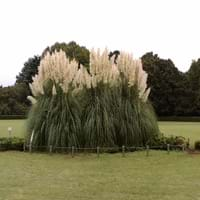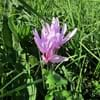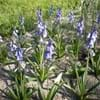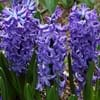Life Span
Perennial
Annual or Biennial
Type
Bulb or Corm or Tuber
Grass
Origin
Europe, Turkey, Central Asia, Western Asia
South America, Micronesia, New Zealand
Types
Colchicum cupanii, Colchicum alpinum
Silver pampas grass, Uruguayan pampas grass, Purple pampas grass
Habitat
Fields, meadows, Rocky areas, Shaded sites, Woodlands
Lawn
USDA Hardiness Zone
Not Available
7-11
AHS Heat Zone
Not Available
11 - 7
Sunset Zone
21,22
H1, 3a, 3b, 4, 5, 6, 7, 8, 9, 10, 11, 12, 13, 14, 15, 16, 17, 18, 19, 20, 21, 22, 23, 24
Habit
Clump-Forming
Clump-Forming
Flower Color
White, Yellow, Purple, Violet
Pink, Violet, White hair and some brown spots on margins and at tips
Flower Color Modifier
Bicolor
Bicolor
Fruit Color
Not Available
Not Available
Leaf Color in Spring
Green
Green, Light Green, Dark Green
Leaf Color in Summer
Light Green
Light Green
Leaf Color in Fall
Several shades of Green
Green, Light Green, Dark Green
Leaf Color in Winter
Light Green
Dark Green, Tan
Leaf Shape
Long Linear
Long and slender with very sharp edges
Plant Season
Spring, Fall, Winter
Spring, Summer, Fall, Winter
Sunlight
Full Sun, Partial Sun
Full Sun
The pH of Soil
Acidic, Neutral
Acidic, Neutral
Soil Drainage
Well drained
Well drained
Bloom Time
Early Spring, Late Summer, Early Fall, Fall, Late Fall, Winter, Late Winter
Summer, Fall
Tolerances
Drought
Drought, Salt
Where to Plant?
Container, Ground, Pot
Ground
How to Plant?
Divison, Seedlings
Seedlings, Stem Planting
Plant Maintenance
Low
Low
Watering Requirements
Do Not over Water, Medium, Needs less watering, Never Over-water, Requires regular watering, Water less during winter
Average Water Needs, Needs watering once a week, Reduce water once established, Water more frequently during periods of extreme drought
In Summer
Ample Water
Lots of watering
In Spring
Less Watering
Moderate
In Winter
Less Watering
Average Water
Soil pH
Acidic, Neutral
Acidic, Neutral
Soil Drainage Capacity
Well drained
Well drained
Sun Exposure
Full Sun, Partial Sun
Full Sun
Pruning
Remove damaged leaves, Remove dead leaves, Remove dead or diseased plant parts, Remove shoots
Prune in late winter, Remove branches, Remove damaged leaves, Remove dead branches, Remove dead leaves, Remove deadheads
Fertilizers
fertilize in growing season, Less fertilizing
Apply 10-10-10 amount, Nitrogen, Phosphorous, Potassium
Pests and Diseases
Not Available
Red blotch
Plant Tolerance
Drought
Drought, Salt
Flower Petal Number
Single, Double
Single
Foliage Texture
Coarse
Fine
Foliage Sheen
Not Available
Matte
Attracts
Bees, Butterflies
Birds, Rats, Snakes
Allergy
Kidney Disease, Low blood pressure, Stomach pain, Toxic, Vomiting
Itchiness, Skin cuts
Aesthetic Uses
Landscape Designing
Showy Purposes
Beauty Benefits
No Beauty Benefits
Not Available
Edible Uses
Yes
Insignificant
Environmental Uses
Air purification, No fertilizer, pesticides, or herbicides needed, Prevent Soil Erosion
Air purification, Provides ground cover
Medicinal Uses
anti-cancer, anti-inflammatory, Diarrhea, Diuretic, Rheumatism
Not Available
Part of Plant Used
Flowers, Leaves
Flowers, Leaves
Other Uses
Employed in herbal medicine, Showy Purposes, Used as Ornamental plant, Used for its medicinal properties
Fibre, Food for animals, Used in paper industry
Used As Indoor Plant
Yes
Insignificant
Used As Outdoor Plant
Yes
Yes
Garden Design
Alpine, Container, Cutflower, Foundation, Lawns and Turf, Mixed Border, Rock Garden / Wall, Wildflower
Dried Flower / Everlasting, Cutflower, Dried Flower/Everlasting, Feature Plant, Foundation, Groundcover, Mixed Border, Screening / Wind Break
Botanical Name
COLCHICUM
CORTADERIA
Common Name
Colchicum
Pampas Grass
In Hindi
colchicum
Pampas grass
In German
colchicum
Pampasgrass
In French
colchique
herbe de la pampa
In Spanish
Colchicum
cortaderas
In Greek
Colchicum
γρασίδι Πάμπα
In Portuguese
Colchicum
grama de Pampas
In Polish
Colchicum
Pampas trawy
In Latin
Colchicum
Pampas herba
Phylum
Magnoliophyta
Vascular plant
Class
Liliopsida
Liliopsida
Genus
Colchicum
Cortaderia
Clade
Angiosperms, Monocots
Angiosperms, Commelinids, Monocots
Tribe
Not Available
Danthonieae
Subfamily
Wurmbaeiodeae
Danthonioideae
Importance of Colchicum and Pampas Grass
Want to have the most appropriate plant for your garden? You might want to know the importance of Colchicum and Pampas Grass. Basically, these two plants vary in many aspects. Compare Colchicum and Pampas Grass as they differ in many characteristics such as their life, care, benefits, facts, etc. Every gardener must at least have the slightest clue about the plants he wants to plant in his garden. Compare their benefits, which differ in many ways like facts and uses. The medicinal use of Colchicum is anti-cancer, anti-inflammatory, Diarrhea, Diuretic and Rheumatism whereas of Pampas Grass is Not Available. Colchicum has beauty benefits as follows: No Beauty Benefits while Pampas Grass has beauty benefits as follows: No Beauty Benefits.
Compare Facts of Colchicum vs Pampas Grass
How to choose the best garden plant for your garden depending upon its facts? Here garden plant comparison will help you to solve this query. Compare the facts of Colchicum vs Pampas Grass and know which one to choose. As garden plants have benefits and other uses, allergy is also a major drawback of plants for some people. Allergic reactions of Colchicum are Kidney Disease, Low blood pressure, Stomach pain, Toxic and Vomiting whereas of Pampas Grass have Itchiness and Skin cuts respectively. Having a fruit bearing plant in your garden can be a plus point of your garden. Colchicum has no showy fruits and Pampas Grass has showy fruits. Also Colchicum is not flowering and Pampas Grass is flowering. You can compare Colchicum and Pampas Grass facts and facts of other plants too.
